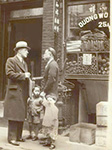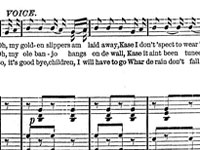 In 1790, federal marshals collected data for the first census, knocking by hand on each and every door. As directed by the U.S. Constitution, they counted the population based on specific criteria, including "males under 16 years, free White females, all other free persons (by sex and color), and slaves." There was no pre-printed form, however, so marshals submitted their returns, sometimes with additional information, in a variety of formats.
In 1790, federal marshals collected data for the first census, knocking by hand on each and every door. As directed by the U.S. Constitution, they counted the population based on specific criteria, including "males under 16 years, free White females, all other free persons (by sex and color), and slaves." There was no pre-printed form, however, so marshals submitted their returns, sometimes with additional information, in a variety of formats.
In 1810 and 1820, additional categories appeared, collecting information on "free White males and females under 10 years of age," as well as those "10 and under 16," "16 and under 26," "26 and under 45," and "45 years and upward." "Free colored persons" and slaves were now counted separately as were "all other persons, except Indians not taxed" and "foreigners not naturalized." Through the decades, the census continued to expand, including a growing number of questions on agriculture, manufacturing, living conditions, education, crime, mortality, and increasingly, race and ancestry.
The census has always had political implications, informing conscription, Congressional representation, and the collection and allocation of taxes. It has also always both reflected and shaped social divisions. Before 1960, census enumerators interviewed families in person and without consulting the individuals, selected which box to check for "race." Starting in 1960, largely for financial reasons, the Census Bureau mailed forms directly to households, thereby allowing individuals to select their own boxes. This led to a fundamental change in the way race was categorized and measured. In 2000, for the first time, individuals could select more than one box and about 6.8 million Americans did so, reflecting the complex nature of racial and ethnic categories today.
The 2010 census is designed to count all residents and will ask a small number of questions, such as name, sex, age, date of birth, race, ethnicity, relationship and housing tenure. The longer American Community Survey will collect socioeconomic data annually from a representative sample of the population.
For searchable (and map-able) databases of historical census data from 1790 to 1960, refer to the University of Virginia's United States Historical Census Data Browser. For more current information, try the official website of the U.S. Census Bureau..
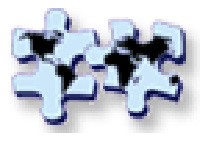

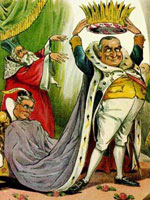
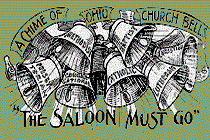
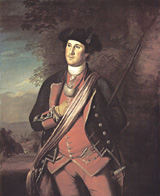
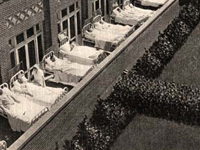
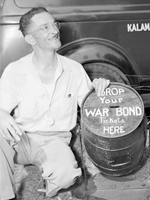
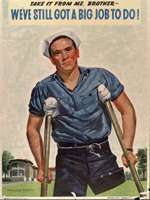
 The tune that would later become "John Brown's Body" developed in the religious camp meetings of the Second Great Awakening (a period of widespread evangelical religious revival, from the early to mid-1800s). Though it existed in various forms for at least several years beforehand, the music first appeared in print in choral books in 1858. Religious lyrics accompanied these versions—and included the "glory, glory, hallelujah" chorus that would remain in "John Brown's Body."
The tune that would later become "John Brown's Body" developed in the religious camp meetings of the Second Great Awakening (a period of widespread evangelical religious revival, from the early to mid-1800s). Though it existed in various forms for at least several years beforehand, the music first appeared in print in choral books in 1858. Religious lyrics accompanied these versions—and included the "glory, glory, hallelujah" chorus that would remain in "John Brown's Body."  According to the most common "origin story," the tune to "John Brown's Body" gained its most famous lyrics—"John Brown's body lies a-mouldering in the grave"—in 1859, some time after the execution of John Brown, the abolitionist who led an antislavery raid on Harper's Ferry, VA, and was subsequently hanged. However, these lyrics were not, originally, about that John Brown. Instead, they referred to a Massachusetts Union soldier, whose fellow soldiers improvised the song from the original camp-meeting tune and religious lyrics to tease him. The song gained verses and lyrics and spread, to be heard by others who assumed "John Brown" was John Brown the abolitionist. Later lyrics, like (d) above, worked from this assumption.
According to the most common "origin story," the tune to "John Brown's Body" gained its most famous lyrics—"John Brown's body lies a-mouldering in the grave"—in 1859, some time after the execution of John Brown, the abolitionist who led an antislavery raid on Harper's Ferry, VA, and was subsequently hanged. However, these lyrics were not, originally, about that John Brown. Instead, they referred to a Massachusetts Union soldier, whose fellow soldiers improvised the song from the original camp-meeting tune and religious lyrics to tease him. The song gained verses and lyrics and spread, to be heard by others who assumed "John Brown" was John Brown the abolitionist. Later lyrics, like (d) above, worked from this assumption. William Weston Patton (pictured here), abolitionist and president of Howard University, heard the song "John Brown's Body" in one of its early versions and wrote a more polished, elaborate set of lyrics for the tune. These lyrics changed the song from being about a John Brown (sometimes the abolitionist and sometimes not) to the John Brown, explicitly telling the story of Brown's execution and memorializing him as a martyr to the abolitionist cause.
William Weston Patton (pictured here), abolitionist and president of Howard University, heard the song "John Brown's Body" in one of its early versions and wrote a more polished, elaborate set of lyrics for the tune. These lyrics changed the song from being about a John Brown (sometimes the abolitionist and sometimes not) to the John Brown, explicitly telling the story of Brown's execution and memorializing him as a martyr to the abolitionist cause. Abolitionist Julia Ward Howe (pictured here) first heard "John Brown's Body" sung by soldiers during an 1861 troop review in Washington, DC. The tune struck her, but the lyrics, in one of their early forms referring to John Brown of the Massachusetts militia, did not. Shortly afterwards, she woke in a DC hotel and composed the words of a poem set to the tune of "John Brown's Body" while lying in bed. In 1862, the Atlantic Monthly published her new lyrics—a paean to the Union Army—to be sung along with the music that had inspired her to write it.
Abolitionist Julia Ward Howe (pictured here) first heard "John Brown's Body" sung by soldiers during an 1861 troop review in Washington, DC. The tune struck her, but the lyrics, in one of their early forms referring to John Brown of the Massachusetts militia, did not. Shortly afterwards, she woke in a DC hotel and composed the words of a poem set to the tune of "John Brown's Body" while lying in bed. In 1862, the Atlantic Monthly published her new lyrics—a paean to the Union Army—to be sung along with the music that had inspired her to write it.


 In 1790, federal marshals collected data for the first census, knocking by hand on each and every door. As directed by the U.S. Constitution, they counted the population based on specific criteria, including "males under 16 years, free White females, all other free persons (by sex and color), and slaves." There was no pre-printed form, however, so marshals submitted their returns, sometimes with additional information, in a variety of formats.
In 1790, federal marshals collected data for the first census, knocking by hand on each and every door. As directed by the U.S. Constitution, they counted the population based on specific criteria, including "males under 16 years, free White females, all other free persons (by sex and color), and slaves." There was no pre-printed form, however, so marshals submitted their returns, sometimes with additional information, in a variety of formats.